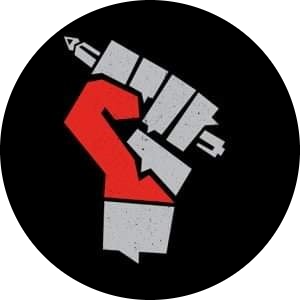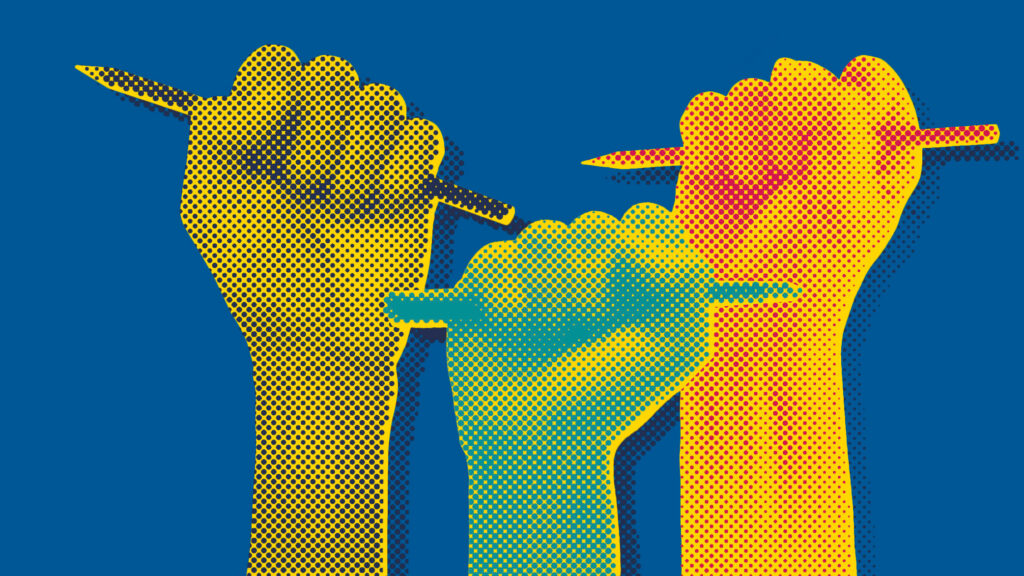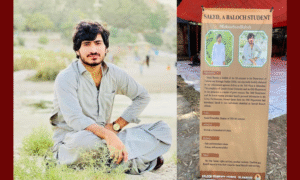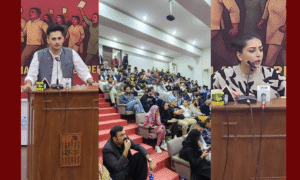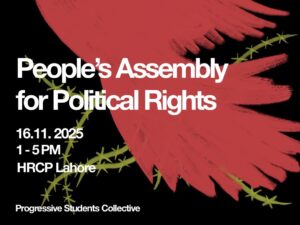Malaika Chishty
Gathering, assessing and disseminating information to present it as news for the interest of masses is described as Journalism, and granting constitutional protection to Journalism is known as Freedom of Press.
The functionality and operation of media is measured by its potential of expansion. The purpose of journalism is to spread awareness amongst the citizens with accurate information that they need in order to make the best possible decisions for their societies and states. Journalism provides a platform for the voices to be heard for the edification of collective consciousness that enlightens the sense of political cognisance, based on facts and truths.
The foundation of journalistic truth relies on investigative principles and fact formulated context, interpretation, criticism, anatomisation and debate. Free press is the corner-stone of a socio-political fabric of any democratic state that ensures the liberty of political participation and civic life.
A state where voices aren’t repressed, political figures are more likely to be held accountable before the law, than a state where the political hub enjoys immunity and exemption from accountability because of weak journalism and restricted freedom of expression.
The base notion of a liberated media is to provide a critical and conducive environment for dissenting and defiant voices which would lead to a more tolerant and prosperous nation.
Article 19 of the Constitution of The Islamic Republic of Pakistan clearly grants the right to freedom of expression. The press, including print, television, radio, and internet are amended to express their concerns under the selected provisions such as PEMRA Ordinance 2002, Defamation Ordinance 2002, Broadcasting Corporation Act,1973 and Code of Conduct for Media Broadcasters/Cable TV Operators. The Protection of Journalists Act, 2014 allows a journalist or news outlets to cover any story without impacting national security of the country.
Ban on News Channels, Newspapers, Issuing notices to Journalists, Restricting Tv content, by the deep state is a process to curb the news outlets to limit the public interest. Whether the rule is democratic or not the critics of the government are never welcomed. The vibrant landscape of Pakistani media has a major history of restricting the press. New tools of censorship are developed to control the media on giving airtime to the opposition parties.
On 22 April 2007 PEMRA threatened the private television channel Aaj TV with closure for airing news, talk shows, and other programs that discussed the then-current judicial crisis. PEMRA warned all private TV channels not to air programs casting aspersions on the judiciary or on the “integrity of the armed forces of Pakistan”, as well as content which would encourage and incite violence, contained anything against the maintenance of law and order, or which promoted anti-national or anti-state attitudes.
During March 2009 demonstrations demanding the reinstatement of Chief Justice Iftikhar Chaudhry, authorities temporarily shut down the cable service of Geo TV and Aaj TV in cities around the country.
In October 2009 four television news channels were blocked for several hours in the wake of a terrorist attack on the army headquarters in October 2009.
In 2010, PEMRA ordered cable operators to block the broadcasts of Geo News and ARY News after they aired the footage of a protester in throwing a shoe at former president Asif Ali Zardari in Birmingham, UK.
On September 4 2010, Umar Cheema—the senior member of the investigation cell of a leading media group, was abducted and taken to an unknown location, where he was physically abused. His abductors threatened more torture if “he didn’t mend his ways”
On November 18 2010, the body of journalist Lala Hameed Baloch, who had been kidnapped in late October, was found along with the body of a second journalist, Hameed Ismail, with gunshot wounds outside of Turbat, Balochistan Province. His family, local journalists, and the Pakistan Federal Union of Journalists believed that he was seized by security officials and targeted for his political activism.
In 2011, 7 journalists were killed because of their unconventional reporting methods. One of the prominent cases was of Saleem Shahzad. He was warned by the powerful Institution of the state at least three times prior to his death. In October 2010, Shahzad was summoned to Intelligence headquarters the day after publishing a sensitive article on Abdul Ghani Baradar’s capture. Afterwards, he wrote to Human Rights Watch predicting that he might be detained by the of the state. Later he was abducted and murdered allegedly by the ones who know how to choke the dissent voices.
In 2011 PEMRA threatened to suspend Geo News’s transmission citing Section 20(g) of its code of conduct, on airing a song titled “Kon Sacha, Kon jhoota?” being critical on the army’s policies and its close ties to the US government.
On June 25 2012, four gunmen attacked the office of, Aaj TV, leaving behind two people wounded.
From 2000 to 2013, over 100 journalists and media workers killed in Pakistan and over 2,000 journalists assaulted, injured, kidnapped, arrested, tortured and harassed in this period.
In August 2013, Karachi police kidnapped and assaulted reporter Ali Chishti, who writes frequently on security and intelligence issues.
In October 2013, intelligence officials arrested Muhammad Zaib Mansoor, a journalist based in Khyber Pakhtunkhwa Province.
The total number of Journalists and media assistants attacked, threatened or harassed in 2014 is 58.
On April 19, 2014, Hamid Mir, an anchorperson for Geo News TV channel was shot at and received six bullets in his body. The journalist’s family charged intelligence agency ISI chief Lt Gen Zaheerul Islam of masterminding the attack.
In 2014 ARY News was taken off the air for 15 days after a high court ruled that the broadcaster was “maligning” the country’s judiciary, the country’s media regulation authority said.
In April 2015, a Journalist and assistant professor of the University of Karachi, Dr Syed Wahidur Rahman, was shot dead in Karachi. He was expected to participate in the panel discussion, “Unsilencing Balochistan Take 3,”
In June 2016, PEMRA banned host-actor Hamza Ali Abbasi of Aaj TV and scholars Kokab Noorani and Shabbir Abu Talib of TV One for criticising the constitution, which declares Ahmadis a non-Muslim minority.
In October 2016 Cyril Almeida was targeted for his story about a meeting between the elected government and the powerful military. The civilian-led interior ministry immediately put Almeida on the Exit Control List (ECL), barring him from leaving Pakistan, and threatened him with worse consequences.
In October 2016, the government granted extensive powers to Absar Aslam, chairman of the Pakistan Electronic Media Regulatory Authority (PEMRA), to revoke licences and shut down electronic and print media without prior warning.
In 2016 PEMRA penalised Din News, Neo TV and Sach TV for slandering the court judges and broadcasting irresponsible analysis and comment against the judiciary.
From 2017 to 2018 at least 157 cases of attacks and violations were documented, across all four provinces, Islamabad and tribal areas. That’s an average of about 15 cases of violations a month.
On November 25, 2017, Government of Pakistan suspended all news channels for over 24 hours, to prevent the coverage of police crackdown against protestors in Islamabad.
In recent years around 2018 to 2019 10 journalists were killed while 15 others were injured in different outbreaks of violence due to their truth based reporting . In Pakistan, 60 journalists were allegedly charged under the Anti-Terrorism Act.
n 2019, the government suspended news TV channels, including Channel 24, Abb Takk News, and Capital TV for broadcasting Maryam Nawaz’s speech.
In 2020 there have been 90 cases of attacks and violations against media in Pakistan in one year:7 journalist killed, 2 abducted, 9 arrested, 10 assaulted, 23 threatened, 10 censored and 8 slapped with legal cases have been reported.
PEMRA suspended the licence of NEO TV after the expiry of its show-cause notice period as the transmissions by the channel were found to be illegal
On 3 July 2020 PEMRA suspended with “immediate effect” television channel 24NewsHD’s licence for “illegal transmission of news and current affairs content”.
On 13 March 2020, Mir Shakil Ur Rehman, the editor in chief of the Jung group was arrested by the NAB over a 3-year-old allegations
On 21 July 2020, senior journalist Matiullah Jan, best known for his criticism on state’s military was abducted from Islamabad’s Sector G-6.
The democratically elected totalitarian government has established certain parameters that abstain the media from criticising the state machinery. How many more decades would it take to understand that freedom of the press is not a privilege, but the fundamental right of a democratic society? When the state thoroughly follows this aphorism, the governing chamber is never immune from accountability and it obtains transparent political mechanism that promotes the public interest.
The Students’ Herald News Desk focuses on reporting the latest news regarding student politics and campus updates to you.
The News Desk can be reached at admin@thestudentsherald.com
